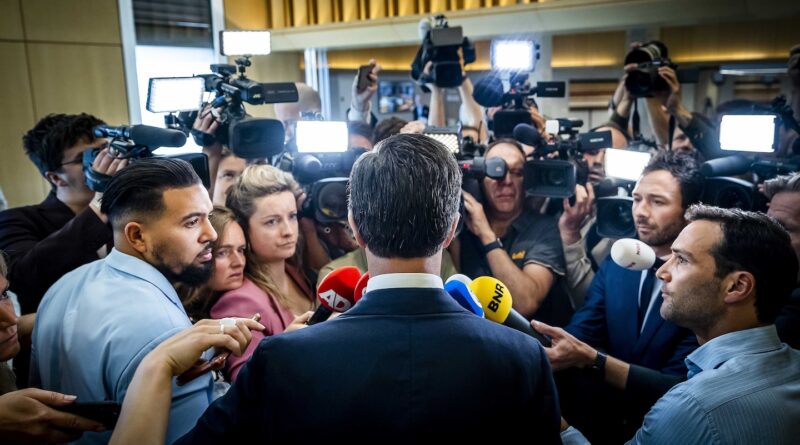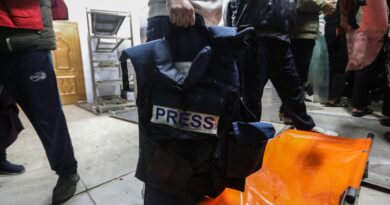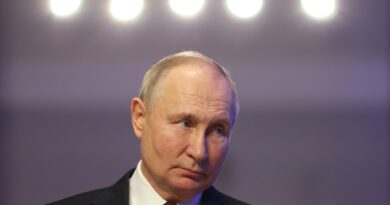Why did the Dutch government collapse over a refugee policy dispute?
His latest four-party coalition imploded over disagreements on policies to limit the number of refugees and asylum seekers entering the Netherlands.
On Monday, he said not running for a fifth term “is a personal decision and is independent of developments over the last few weeks.”
Here’s what you need to know.
Rutte, the longest-serving prime minister of Netherlands, first took office in 2010. “I feel like I’m getting to the halfway point,” he quipped at a news conference in July last year, according to Reuters.
The news agency called Rutte, 56, a “veteran conservative on the European political scene” and pointed out that many Dutch voters were wearied by the string of crises — including the child welfare fraud scandal — though there was no obvious alternative to his leadership.
In charge of the E.U.’s fifth largest economy, Rutte became one of the union’s strongest advocates of fiscal prudence, unofficially leading the so-called “Frugal Four,” which also includes Austria, Denmark and Sweden. In 2020, Rutte blocked a historic budget-and-recovery fund to support nations out of the covid-19 crisis, leading his counterparts in southern Europe to dub him “Mr. No.” He brought a biography of Chopin as reading material during the budget talks, saying his position was clear and there was nothing to negotiate.
“We’re not here so we can go to each others’ birthdays for the rest of our lives — we’re all here to defend the interests of our own countries,” Rutte told reporters that week.
Rutte is a strong pro-European leader, but advocates for a union with limited powers and a smaller common budget. He’s shown reluctance on E.U. enlargement and further integration. He’s also stood out for his defense of the rule of law, once saying Hungary “has no business being in the European Union anymore,” after it passed a controversial anti-LGBTQ+ law.
During his time in office, he has headed a series of coalitions of minor parties. Rutte’s VVD, or People’s Party for Freedom and Democracy, holds 23 percent of parliamentary seats, described as a “commanding” victory by Politico after the 2021 election. His skills in managing to keep seemingly impossible coalitions together have led him to contribute to European discussions as a negotiator.
Rutte’s most recent coalition, which collapsed Friday, was formed in December 2021. It included two center-right parties — VVD and the Christian Democratic Appeal (CDA) party — and two centrist parties, the Democrats 66 (D66) and Christian Union parties.
Why did immigration policy cause the government to collapse?
After the surge in migration to Europe in 2015, when more than a million people sought asylum on the continent, Dutch authorities scaled back immigration staff, closed asylum centers and reduced shelter capacity, according to the Dutch Council for Refugees, a refugee rights group.
But asylum applications in the Netherlands are again on the rise — the government said in April that it expected 70,000 applications for asylum this year because of “turbulence in countries both within and outside the European continent” — and the bare-bones system has struggled to cope with the influx.
There were about 46,000 entries last year — about 35,000 first entries and 11,000 family unifications — with first applications for asylum up 44 percent on the previous year, according to official figures.
In August, the humanitarian group Doctors Without Borders deployed to the Netherlands for the first time to provide assistance to refugees at an asylum center in the village of Ter Apel. There, near the shelter, more than 700 people were sleeping outside in a field in what the group described as “inhumane and undignified conditions.”
The death that week of a 3-week-old infant at the shelter put a spotlight on the dire conditions facing asylum seekers in the Netherlands. But part of Rutte’s response to the crisis was to double down on his proposals to curb the flow of migrants and asylum seekers into the country.
So for months, Rutte’s party and coalition partners negotiated over the proposed restrictions, including a measure that would make it harder for refugee families to reunite in the Netherlands.
Rutte and his party wanted to create two tiers of refugees — with those fleeing persecution granted more rights than those fleeing war — and to impose a yearly cap of 200 entries for the family members of war refugees who are already in the Netherlands, Politico reported.
He then demanded support for a rule that would limit entrance for the children of war refugees already in the country and make families wait at least two years before they could be reunited, Reuters reported.
But the coalition’s junior partners pushed back, thwarting support for the measures.
Mirjam Bikker, leader of the Christian Union party, appeared to refer to these proposals in a Friday statement about the government’s collapse.
“For us, one of the values that is important in proposals is that children grow up with their parents,” she said, adding that the parties had “failed to arrive at a package that we can jointly support.”
What’s next for the Dutch government?
Rutte and his government will continue operating in a caretaker capacity until elections are held, expected to be later this year. In this role, the government can’t make new policies but can keep the country running.
Claire Parker contributed to this report.




